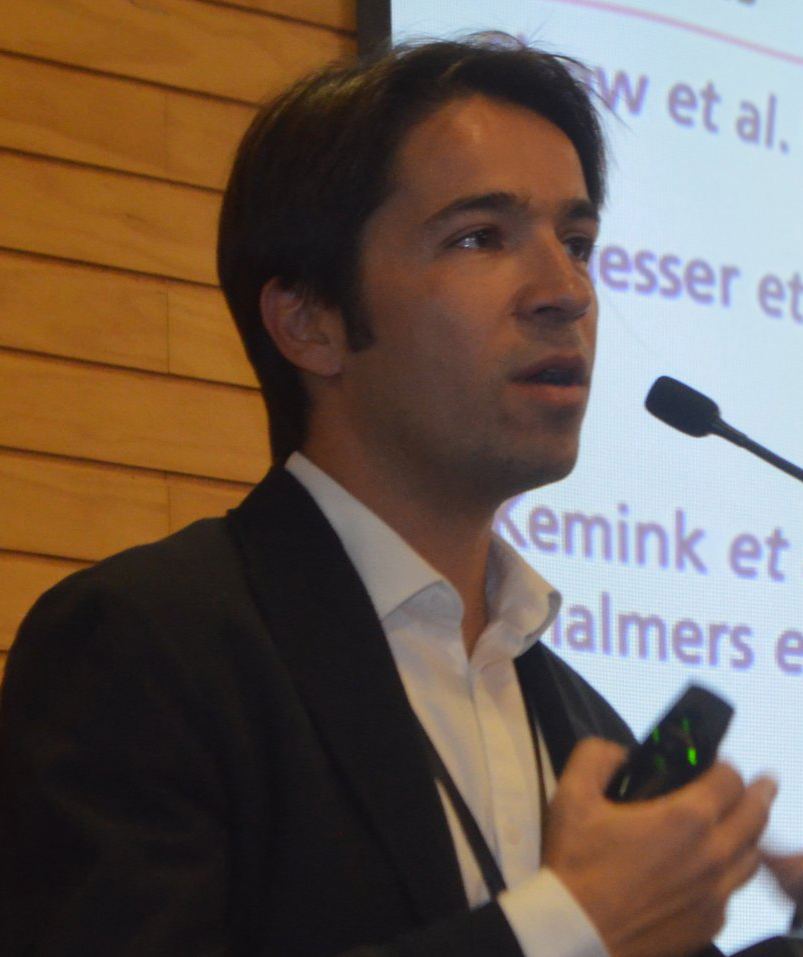
A French study published in the Journal of the Endocrine Society reveals myriad complications that many acromegaly patients face after they’ve been successfully treated. Lead researcher Frederic Castinetti, MD, PhD, discusses his research and why follow-up may still be required once a patient is “cured.”
Last December, a paper appeared in the Journal of the Endocrine Society that shined a light on problems that patients with acromegaly might face – even after their acromegaly was successfully treated by surgery and/or medication.
A team led by Frederic Castinetti, MD, PhD, of the French Reference Center for Rare Pituitary Diseases HYPO (Aix-Marseille University and La Conception Hospital, Marseille, France), examined data from 130 patients whose acromegaly had been controlled and even cured, looking to find just how many of these patients might still suffer from major metabolic comorbidities like diabetes and hypertension.
Acromegaly is rare, affecting an estimated three or four million people a year. And it’s slow-moving; the time it takes to accurately diagnose acromegaly is five to 10 years, which provides ample time for any number of comorbidities to arise. “As a rule,” Castinetti and his team write, “[comorbidities] are already present at the time acromegaly is diagnosed.”
Castinetti and his team found that a significant proportion of their study participants had lingering comorbidities even after their acromegaly had been controlled — 27% for altered glucose tolerance or diabetes, 39% for hypertension, 34.3% for hypercholesterolemia, and 13.3% for hypertriglyceridemia.
Castinetti and his team wrote in the JES paper that these results were expected, but these numbers may come as a surprise to other physicians and researchers. Endocrine News caught up with Castinetti to talk about this study and what it means for those treating this complicated disease.
Endocrine News: First off, tell me about the origins/impetus of this study.
Frederic Castinetti: For long years, the main focus in terms of management of acromegaly (or any other secreting pituitary tumors, such as in Cushing’s disease), has been the control of hypersecretion. This is why the majority of the studies focused on surgery and antisecretory drugs. Some studies focused on the comorbidities of acromegaly and showed that growth hormone (GH) hypersecretion led to comorbidities such as diabetes, hypertension.
In a French multicentric study, we had shown* that about a fourth of patients with acromegaly were lost to follow-up. The majority of the patients lost to follow-up are the ones who are in remission, and we just thought it would be interesting to check whether, despite remission of acromegaly, these patients still needed to be followed for their comorbidities. In other words, would these comorbidities persist even in patients cured for a relatively prolonged period of time. This was a way for us to emphasize the need that these patients be followed for a long-term period (even if they were cured).
EN: I found this part at the beginning interesting: “The overall diagnosis delay is usually 5 to 10 years, which allows for the installation of a number of comorbidities. As a rule, these are already present at the time acromegaly is diagnosed.” Can you tell me a little more about that?
FC: Physicians are not very good at early diagnosis of acromegaly. During all this period of latency (and undiagnosed acromegaly), GH excess has the time to lead to comorbidities, and it is likely that the longer the delay to diagnosis, the higher the risk of persistent comorbidities after acromegaly remission/cure.
EN: You write that there is still a debate on the persistence of comorbidities after control of hypersecretion. Can you give me the broad strokes of this debate?
FC: What we wanted to say was that some teams still did not take precisely into account the risk of persistent comorbidities after the cure/remission of acromegaly. But I guess now we cannot say that there is still a debate. Of note, there has been a recent paper by Moises Mercado’s team, published in [The Journal of Clinical Endocrinology & Metabolism], that showed roughly the same results we showed (i.e., persistence of diabetes and hypertension in patients with acromegaly cured or in remission).

EN: It’s interesting that the rate of diabetes is actually higher in controlled or cured patients than in the general population. Can you speak a little more to that?
FC: We could say that a body that has been exposed to an excess of GH secretion keeps a kind of memory of these negative effects. Altered glucose metabolism due to GH hypersecretion could thus persist despite normal GH levels, possibly because the organism is not anymore able to correctly adapt its blood glucose.
EN: You write about the discrepancies in findings and say that “probably suggests that other modifying factors modulate the overall risk of diabetes in patients with acromegaly.” Can you speak a little more to that?
FC: The thing is that diabetes is not only linked to GH hypersecretion. We did not have the data about familial cases of diabetes. And we know that in this population, the familial history of diabetes increased the risk of diabetes, independently of the GH status.
EN: You write that your group only focused on controlled patients. What was the reasoning behind that?
FC: It is very easy to understand that patients with persistent GH hypersecretion have an increased risk of diabetes. But it is less obvious in patients with no persistent GH hypersecretion. We wanted to warn physicians of the need of persistent follow-up of such patients with acromegaly: once your job is done and the secretion is controlled, never forget that the comorbidities can still be there.
EN: Why do you think this kind of follow-up hasn’t been evaluated in international guidelines?
FC: As previously mentioned, this issue is now becoming more and more recognized. It is likely that the future guidelines will take into account these points and the follow-up of patients after the cure/remission.
EN: This part struck me as well: “This is a highly relevant issue, as about a fourth of the patients have been found to be lost to follow-up after control of hypersecretion.” Can you speak more to that?
FC: In our previous study (ACROSPECT Study), we showed that about a fourth of patients were lost to follow-up. The reason is obvious: when, as a patient, you understand that your disease (acromegaly) is cure, you think you do not need any follow-up.
EN: What would you want Endocrine Society members and others who might read this article to take away from your findings?
FC: Keep an eye on your patients with acromegaly, even if they are cured or in remission. Persistent comorbidities are not infrequent and observed in roughly 25% of cases even when GH secretion is normal.

